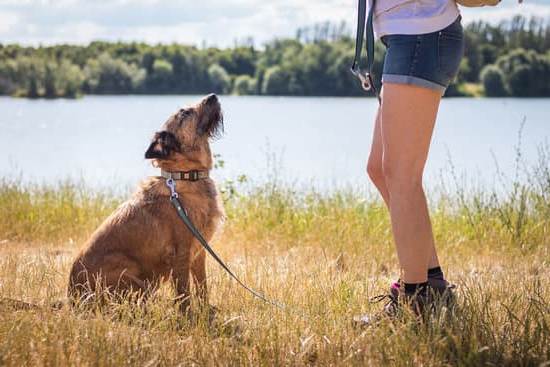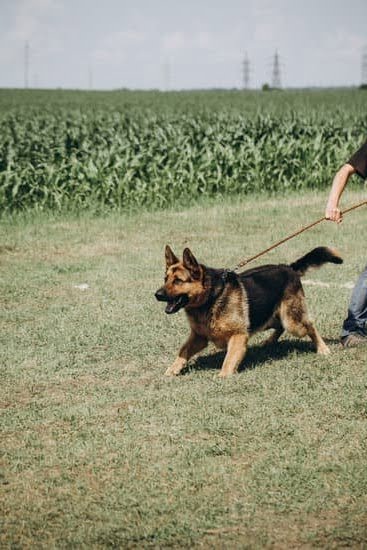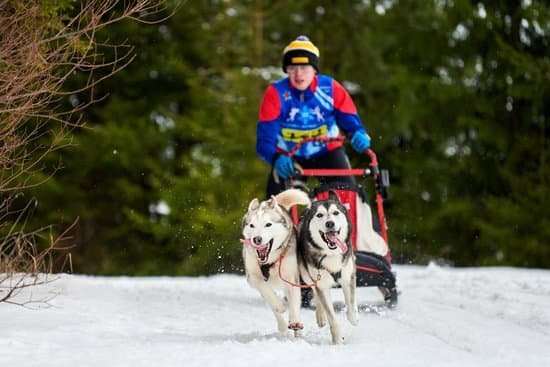How do you train a dog to stay home alone? Leaving your furry friend at home can be a worrisome experience for both you and your pet. Understanding the importance of training your dog to stay home alone is crucial for their well-being and your peace of mind. In this article, we will explore the steps and strategies to help you train your dog to be comfortable and content while you are away.
When it comes to training a dog to stay home alone, there are several key factors to consider. Assessing your dog’s behavior and needs, creating a comfortable environment, desensitization training, establishing a routine, using enrichment activities, positive reinforcement, addressing separation anxiety, and seeking professional help when needed are all essential aspects that we will delve into in this article.
Leaving a dog at home without proper training can lead to anxiety, destructive behaviors, and potential harm to themselves or your home. By implementing the right techniques, you can help your dog feel secure and relaxed during your absence. Follow along as we guide you through the process of training your dog to stay home alone with confidence and success.
Getting Started
Before you can start training your dog to stay home alone, it’s important to assess your dog’s behavior and needs. Every dog is unique, so understanding your dog’s temperament, disposition, and behavior will help you tailor your training approach to best suit them. Here are some steps to consider when assessing your dog’s behavior and needs:
1. Observe Your Dog: Spend time observing how your dog behaves when you’re at home with them. Take note of any signs of anxiety or distress, such as pacing, whining, or destructive behavior.
2. Consider Their Breed: Different breeds have different energy levels, exercise needs, and tendencies. Understanding your dog’s breed characteristics can give you insight into what they may need when left alone.
3. Evaluate Previous Experience: If your dog has shown signs of separation anxiety or distress in the past when left alone, take this into consideration when planning their training.
By taking the time to thoroughly assess your dog’s behavior and needs, you’ll be better equipped to create a training plan that addresses their specific requirements and sets them up for success when staying home alone. Remember that patience and consistency are key when working with dogs, especially when it comes to preparing them for solo time at home.
Desensitization Training
Gradual Departures and Short Absences
One of the key components of desensitization training is gradually exposing your dog to your absence. Start by practicing short departures, such as stepping outside for a few moments and then returning. Over time, gradually increase the duration of your absences to help your dog become more comfortable with being alone.
Creating Positive Associations
During your departures, provide your dog with a special treat or toy that they only have access to when you are away. This will create a positive association with your absence and help alleviate any anxiety or stress. Additionally, consider leaving behind an item of clothing with your scent to provide comfort to your dog while you are gone.
Avoid Making a Big Deal About Departures and Arrivals
When practicing desensitization training, it’s important to avoid making a big fuss over leaving or arriving home. By downplaying these moments, you can help reduce any anxiety or excitement in your dog surrounding these transitions. Remain calm and composed when leaving and entering the house to promote a sense of routine for your pet.
By implementing these desensitization training techniques, you can help teach your dog to be comfortable with your absence and reduce any anxiety or distress they may experience when left alone. Remember to be patient and consistent in your approach, as every dog will respond differently to this type of training. If you encounter challenges along the way, don’t hesitate to seek guidance from a professional trainer or behaviorist for further assistance.
Establishing a Routine
Feeding and Bathroom Schedule
One of the most important aspects of establishing a routine for your dog is setting a consistent feeding and bathroom schedule. This helps regulate your dog’s bodily functions and reduces the chances of accidents in the house. Try to feed your dog at the same times each day, and take them out for bathroom breaks at regular intervals. This will also help with their overall well-being and digestive health.
Exercise and Playtime
Incorporating regular exercise and playtime into your dog’s daily routine is crucial for their physical and mental stimulation. A tired dog is usually a well-behaved dog, so make sure to include enough time for walks, play sessions, and mental enrichment activities before leaving them alone. This will help prevent restlessness or destructive behavior due to pent-up energy.
Quiet Time and Rest
Just as important as exercise and playtime is ensuring that your dog has time for rest during the day. Establishing quiet periods or nap times will help your dog relax and recharge, making it easier for them to settle down when left alone. This can be especially beneficial for anxious dogs who may need extra reassurance that it’s okay to relax while you’re away.
By implementing a consistent schedule that includes feeding, bathroom breaks, exercise, playtime, quiet time, and rest, you can help your dog feel more at ease when staying home alone. Additionally, sticking to this routine on weekends or days off will further reinforce the predictability of their days, ultimately building their confidence in being alone.
Using Enrichment Activities
Enrichment activities are essential for keeping your dog stimulated and engaged while alone at home. Dogs are social animals and can easily become bored or anxious when left by themselves. By providing mental and physical stimulation, you can help alleviate their loneliness and prevent destructive behaviors.
There are many enrichment activities that you can incorporate into your dog’s daily routine. Puzzle toys, treat-dispensing toys, and interactive games are great options to keep their minds busy while you’re away. These activities not only provide mental stimulation but also encourage your dog to problem-solve and use their natural instincts.
In addition to toys, you can also consider leaving out safe chew toys or bones for your dog to gnaw on. Chewing is a natural behavior for dogs and can help relieve stress and anxiety. Just be sure to always supervise your dog with any new toy to ensure they are using it safely. Overall, the goal is to provide a variety of activities that will keep your dog entertained and content during their time alone at home.
Positive Reinforcement
A key component of training a dog to stay home alone is using positive reinforcement to reward good behavior and build trust. Positive reinforcement involves rewarding your dog for exhibiting the desired behavior, which increases the likelihood of that behavior being repeated in the future.
One effective way to use positive reinforcement is by giving your dog treats or praise when they demonstrate calm and relaxed behavior while you are away. This could include not barking excessively, not exhibiting destructive behavior, or simply being calm and content in their designated space.
In addition to giving treats or praise, you can also use toys or interactive feeders as a form of positive reinforcement. For example, providing a puzzle toy filled with treats can keep your dog occupied and focused on a positive activity while home alone.
| Positive Reinforcement Method | Example |
|---|---|
| Treats | Giving your dog a treat when they exhibit calm behavior |
| Praise | Verbally praising your dog for staying relaxed while you are away |
| Interactive Toys | Using puzzle toys filled with treats to keep your dog engaged |
Addressing Separation Anxiety
Many dogs suffer from separation anxiety when left alone at home, causing stress and disruptive behavior. However, there are several strategies that can help your dog overcome this fear and become more comfortable being alone. One important tip is to gradually accustom your dog to your absence by starting with short periods of time and gradually increasing the duration. This desensitization process can help reduce your dog’s anxiety and build their confidence.
Another helpful tip is to provide your dog with comforting items such as a favorite toy or blanket that has your scent on it. These items can help alleviate stress and make your dog feel more secure while you’re away. Additionally, it’s important to create a calm environment before leaving by avoiding making a big fuss over your departure or arrival, as this can exacerbate your dog’s anxiety.
Implementing a consistent routine for your dog can also be beneficial in addressing separation anxiety. Dogs thrive on predictability, so having a structured schedule for feeding, walks, and playtime can help them feel more secure and less anxious when left alone. By following these tips and being patient with your dog, you can help them overcome their fear of being alone and develop greater independence.
| Strategy | Benefit |
|---|---|
| Gradually Accustoming Your Dog to Your Absence | Reduces anxiety and builds confidence |
| Providing Comforting Items | Alleviates stress and makes the dog feel more secure |
| Implementing a Consistent Routine | Makes the dog feel more secure and less anxious when alone |
Seeking Professional Help
In conclusion, training a dog to stay home alone requires patience, consistency, and understanding of your pet’s needs. It is important to start by assessing your dog’s behavior and needs in order to create a comfortable environment for them. Desensitization training is crucial in teaching your dog to be comfortable with your absence, and establishing a routine will provide them with a sense of security and predictability.
Additionally, incorporating enrichment activities into your dog’s routine will keep them stimulated and engaged while you are away. Positive reinforcement is key in rewarding good behavior and building trust between you and your pet. It is also important to address any separation anxiety that your dog may experience by using the tips provided or seeking professional help from a trainer or behaviorist if necessary.
Remember that every dog is different, so what works for one may not work for another. Be patient with the process and understand that it may take time for your dog to adjust to being home alone. With the right approach, consistency, and understanding of your pet’s needs, you can successfully train your dog to stay home alone with confidence.
Frequently Asked Questions
How Do I Train My Dog to Stay Home Alone?
Training a dog to stay home alone involves gradual desensitization to being apart from their owner. This can be achieved by starting with short absences and gradually increasing the time spent away. Providing a comfortable and safe environment, along with creating positive associations with being alone, can also help ease separation anxiety in dogs.
How Long Does It Take for a Dog to Stay Home Alone?
The amount of time it takes for a dog to stay home alone varies depending on the individual dog and their previous experiences. Some dogs may adapt quickly to being alone, while others may take longer to adjust.
It’s important to be patient and not rush the process, as forcing a dog to stay home alone for extended periods before they are ready can lead to distress and behavioral problems.
How Do I Keep My Dog Occupied When Home Alone?
Keeping a dog occupied when home alone can be achieved through various methods such as providing interactive toys, puzzle feeders, or treat-dispensing toys that offer mental stimulation and keep them physically active. Additionally, leaving an item of clothing with their owner’s scent or leaving on calming music or TV shows can help comfort some dogs while they are home alone.
Creating a predictable routine and providing plenty of exercise before leaving can also help alleviate boredom and anxiety in dogs.

Welcome to the blog! I am a professional dog trainer and have been working with dogs for many years. In this blog, I will be discussing various topics related to dog training, including tips, tricks, and advice. I hope you find this information helpful and informative. Thanks for reading!





